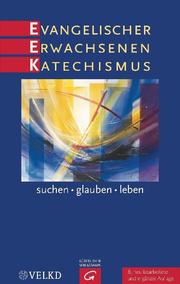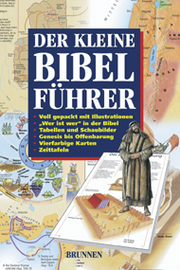Religion and Its Other (Paperback)
Religion and Its Other
Secular and Sacral Concepts and Practices in Interaction, Eigene und Fremde Welten 8
Erschienen am
09.02.2009
Bibliographische Informationen
ISBN/EAN: 9783593386638
Sprache: Englisch
Seiten: 247 S.
Auflage: 1. Auflage 2009
Bindung: Paperback
Beschreibung
Die westliche Moderne trennt das »Religiöse« und das »Säkulare« in zwei Bereiche, die sich radikal entgegenstehen. Außereuropäische Gesellschaften, frühere Epochen und global vernetzte Gegenwartsgesellschaften haben aber auch andere Deutungsmuster: etwa die gegenseitige Durchdringung und Bezogenheit beider Sphären. Ausgehend von dieser Überlegung untersuchen die Beiträge, welche Konzepte und Praxen des Religiösen und des Säkularen in Christentum, Judentum und Islam auftreten und wie sie einander bedingen.
Autorenportrait
Heike Bock, Jörg Feuchter, Michi Knecht (eds.) Religion and Its Other Secular and Sacral Concepts and Practices in Interaction Heike Bock und Jörg Feuchter, beide Dr. phil., sind wiss. Mitarbeiter am SFB 640. Michi Knecht, Dr. phil., ist Assistentin am Institut für Europ. Ethnologie der HU Berlin.
Leseprobe
Introduction: Reconfiguring Religion and Its Other Michi Knecht and Jörg Feuchter "Any discipline that seeks to understand religion must also try to understand its other." (Talal Asad) Religion is back. At the turn of the new millennium, swan songs of religious decline have given way to the rhetoric of religious returns. Already over the course of the last four decades, theories of secularization have lost much of their former plausibility. Empirical observations as well as analytical arguments are brought to bear evidence against accounts that narrate the story of modernization as a "disenchantment of the world" (Max Weber) and as a progressive separation of politics and religion in an oversimplified manner. From being the model case for a universal trend, parts of Europe have been reallocated to the position of an exception from the rule, their high degree of secularization itself becoming an object of more localized theoretical arguments and more sustained empirical analysis. The course of history can no longer be understood as an inevitable development towards the vanishing of religion. Yet as much as this insight may have become common sense among scholars of the humanities and social sciences concerned with religion, as little do we seem to have begun to grasp ist epistemological implications for our world. Because if even secularized European societies can be described as "postsecular" in a certain sense, as Jürgen Habermas has just pointed out, then "the secular" itself, until recently a virtually unquestioned background category in the studies on religion, can no longer be taken for granted. Rather, it has to become the object of study. Instead of being understood as the absence of religion, as the real world which is left after the removal of the world's "enchantment", it has to be understood as a particular figuration. And of course, the end of simple secularization narratives has also deep effects on our understanding of religion as well as for the dichotomy within which both religion and the secular are constructed. This is where this volume takes up. It is an attempt to grapple with the epistemological consequences of the postsecular turn. It endeavors to rethink the relationship between religion and different forms and dimensions of the secular through a wide array of empirically grounded case studies from different disciplines. In doing this, its leitmotif is the figuregroundrelationship between religion and its other as it is perceived and configured locally, regionally, nationally or transnationally in historical as well as contemporary contexts. Yet the notion of the "other of religion" is open to more than one possible meaning, and it cannot be fixed independently of specific situations and forms, in which it is embedded. In this volume, "religion's other" refers to a number of constellations along two rather broad, but distinct dimensions. For one, all contributions to this publication take up the "other of religion" as an instance of the secular in its manifold forms. These range from the secular state, positive law, and specific formations of secular selves and embodiments to particular practices of biomedicine, science, and journalism. In addition, the majority of the authors in this volume also address the "other of religion" in the sense of "other religions". Along this dimension, they trace processes of real or imaginary engagements and transfers amongst and between Protestantism and Catholicism as well as amongst and between Islam, Judaism and Christianity. The contributors outline the boundarysetting and bordercrossing strategies of reform movements as actively located within larger, hegemonic congregations or communities of faith and investigate the articulations and appropriations that occur in encounters between locally expressed religions and more widely mobilized and traveling forms. The two dimensions of "religion's other" - the secular or the nonreligious on the one hand, and other religions on the other hand - touch and intermingle. At their interfaces, a set of questions is generated that provide the contributors to this volume with common ground in spite of the fact that their fields of inquiry span eight centuries and three continents. One such set of emerging shared problematizations concerns the possibility to conceptualize religion and the secular without giving priority to the experiences of Western modernities. Whether the presence of more than one form of religion is an explicit aspect of their research agenda or rather an implicit acknowledgement of the coevalness of different religions understood as a "common, active occupation or sharing of time", all contributors try to overcome conceptions of religion and the secular that are exclusively fed by Western histories, narratives and categories. Instead they aspire to more encompassing, sometimes also more discomforting global perspectives. A second set of shared commitments is about the hope of invigorating theory and analytical concepts through dense and detailed empirical case studies that describe and portray the complex interactions of religion and its diverse others within a microanalytic perspective. Finally, all contributions focus on the processes through which borders and boundaries between "religion and its others" are defined, maintained, negotiated and eventually stabilized or modified. They thereby contribute to the accumulation of discontinuous, contingent, and always specific histories of diverse constellations of religion and its others and productively challenge notions of religion and the secular liable to rash universalizations. A further layer of ambiguity or complexity entailed in the notion "religion and its other" has to do with the suggested relationship between its two elements. With regard to the secular as religion's most significant other, the title of this volume points to a figuration that cannot adequately be understood as a simple dualism. Even though the two features are often viewed as antithetical to one another, we suggest they are in fact better thought of as crucially and intricately intertwined. "Religion and its other" invokes a relation that develops through the transformation of both elements or poles. It is closely associated with ideas of interdependence and interactivity and connotes processes of mirroring (as in the work of Lacan) and of dialectics (as in the writings of Hegel and Marx). At the same time, it not only associates mutual influence or even integration, but also distancing and exclusion. It thus generates questions that address the entangled histories of religion and the secular as imbued with asymmetries and imbalances of power. All these dimensions and connotations add complexity to the notion of "religion and its other". It is this very complexity of the image that makes it "good to think with" in the classic phrasing of Claude LeviStrauss and that might help It is used to mark concepts or terms which prove to be particularly useful in rethinking common sense assumptions visàvis culturally diverse data and materials. The phras12 to redirect research away from binary models towards an analysis of the secular and the religious as coconstitutive. In what follows, we trace some of the critical positions that have contributed towards this development and introduce the case studies of this book in their attempt to rethink religious reform, to rewrite scholarly concepts and genealogies, and to transgress borders and boundaries that have disciplined the study of religion and its other for long.
Inhalt
Contents Acknowledgments Introduction: Reconfiguring Religion and Its Other Michi Knecht and Jörg Feuchter Rethinking Religious Reform Law, Ethics and Religion in the Story of Egyptian Modernization Talal Asad Muhammad RashÃd Ridâ (1865-1935) or: The Importance of Being (a) Journalist Dyala Hamzah Islamic Reformism and the Secular: RashÃd Ridâ''s Theory on Miracles Richard van Leeuwen Early Modern Probabilism as a Secularizing Doctrine: Including a Preliminary Comparison with Some Interpretative Instruments of "Liberal Islam" Carlos MartÃnez Valle Rewriting Genealogies Beyond Religion: On the Lack of Belief During the Central and Late Middle Ages Dorothea Weltecke The Islamic Rib¯at: A Model for the Christian Military Orders? Sacred Violence, Secularized Concepts of Religion and the Invention of a Cultural Transfer Jörg Feuchter The Formation of Jewish Mysticism and Its Impact on the Reception of Rabbi Abraham Abulafia in Contemporary Kabbalah Boaz Huss Transcending Borders and Boundaries The Devil in Spandau: Demonology between Religion and Magic at the End of the Sixteenth Century Vera Isaiasz Science Treats, but only God Can Heal: Medical Pluralism between Religion and the Secular in Ghana Kristine Krause Formations of the Religious Self: Becoming "Women in Christ" in a Globalizing World Gertrud Hüwelmeier Image, Trance, and the Other in Mediterranean Folk Religion Thomas Hauschild Notes on Contributors Index of Names and Places
Schlagzeile
Eigene und fremde Welten
Weitere Artikel aus der Kategorie "Religion/Theologie/Allgemeines, Lexika"
Neuerscheinung

Neuerscheinung

Lieferbar innerhalb 24 Stunden

Lieferbar innerhalb ca. einer Woche






